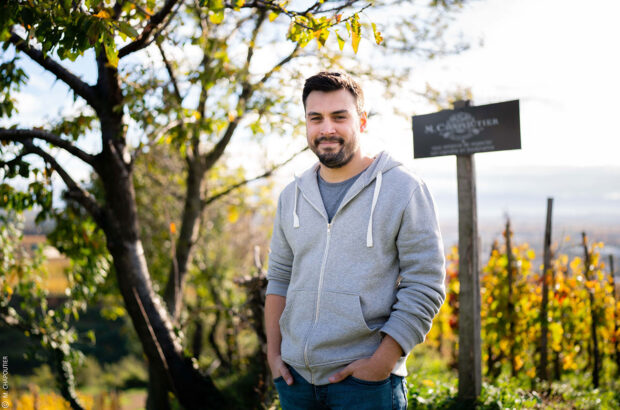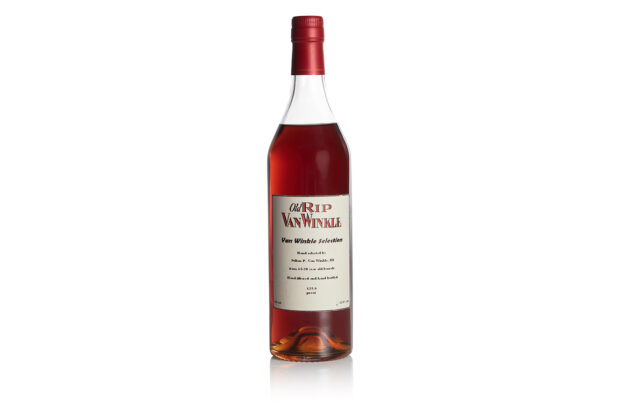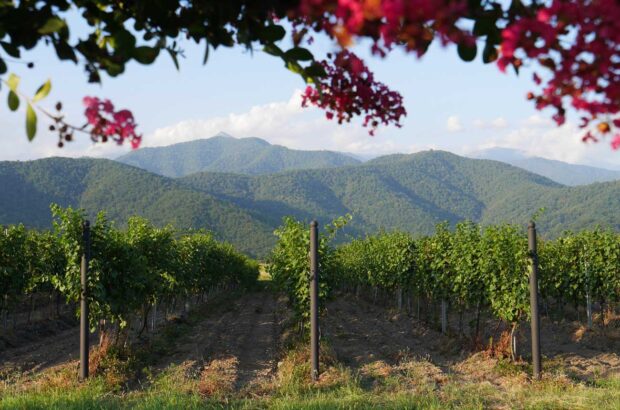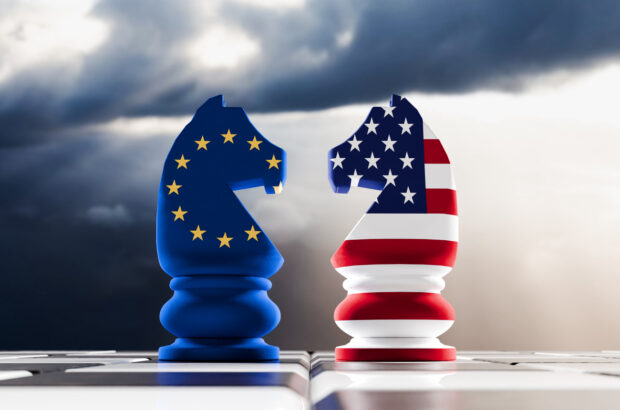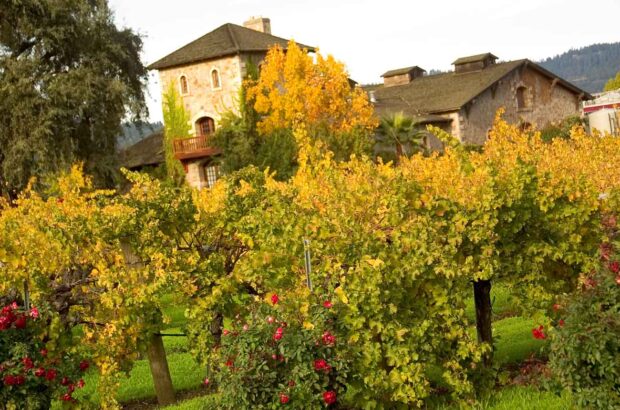One of the more amusing stories on decanter.com in recent months was that of a French Sauvignon Blanc named ‘Kiwi Cuvée’ being banned in Australia. The authorities were concerned it could be mistaken for a New Zealand wine. David Cox, European director of New Zealand Wine Growers, called the imitation ‘a delicious irony’; other responses were more defensive.
One respondent said that the wine was made in France for Lacheteau by Rhyan Wardmann, a New Zealand winemaker, and had been on sale for 10 years without anyone worrying very much, and that in any case ‘Kiwi’ is a brand of shoe polish. I might just as well add that Marlborough is a town in Wiltshire. Yes, Wiltshire, England
But ironies aside, the story does lead us neatly to the relationship that Loire Sauvignon Blanc has with its young cousin in New Zealand. Ten years ago growers in Sancerre would say, ‘No, we don’t like New Zealand Sauvignon Blanc, it’s heavy. We like lightness and elegance.’ It was New Zealand Sauvignon that was grabbing all the plaudits then, and 10 years on it still is. In the mind of the general consumer, New Zealand is the archetype of Sauvignon Blanc; Sancerre is miles behind, probably old-fashioned, and certainly too expensive.
Expensive it certainly is. Loire broker Charles Sydney points out that a Sancerre with an ex-cellar price of E6 in 2006 would have been on British retail shelves at £9.99. In 2007 it would have been £10.50, in 2008 £11.99 and in 2009 £12.99. Some growers, he says, did raise their prices during that time, and by too much, but many others held firm: blame duty hikes and the currency.
Point of difference
Quality-wise, Sancerre spent a long time coasting on its reputation. It was a familiar name to restaurant-goers, who were relieved to see it on a list and didn’t think too hard about whether it was worth the money. From the growers’ point of view, there was a price premium attached to the name which meant that they didn’t need to try too hard if they didn’t want to.
But the world is changing, and everyone has to try harder. The obvious path for Sancerre would be to imitate New Zealand, and for the blackcurrant-leaf fruit of good Sancerre to disappear in a flood of Kiwi-inspired gooseberries. Some of the Loire is certainly going down that path. But in Sancerre the opposite has happened. They’ve returned to their terroir, to the fine detail of what they do; and they want minerality in their wines, not blockbusting fruit.
To hear a Sancerre grower say, ‘I want to express the terroir, not the variety,’ is to be transported to Burgundy, where Pinot Noir or Chardonnay are vehicles for something more interesting than mere varietal fruit. What looked like pig-headedness 10 years ago now looks like forensic curiosity about what they have under their feet. And, it should be stressed, Sancerre growers don’t see New Zealand as their main rivals. They regard them with respect, certainly; but Sancerre winemakers’ main rivals are next door in Pouilly-Fumé, down the road in Quincy and Reuilly, or even a little further away in Bordeaux. The context in which they wish to shine is entirely French.
‘Between 1995 and 2010 there has been a huge difference in how we work the vineyards,’ says Raphaël Durand, who consults for Château de Thauvenay. ‘There are fewer pesticides, we grass between rows, there’s better aeration in the vines, and leaf removal.’
Jean-Laurent Vacheron, describing his family estate’s conversion to ‘pragmatic biodynamics’, talks of picking times, grape sorting, replanting with massal selections, cover crop rotation and ploughing: ‘We have changed nothing, and everything’.
From chalk to flint
The terroir which this far more detailed viticulture aims to express is sufficiently complicated to make it worthwhile. There is chalky clay known locally as terres blanches, which gives a balance of richness and freshness, and often the most harmonious wines; there’s caillottes, a hard, compact chalk, usually at the base of the hills, which gives wines of finesse and perfume; and there’s silex, or flint, which gives a certain fieriness, a sparkiness, to the wine. The terraces of sand or gravel near the river give early-maturing wines, but the focus, for Sauvignon Blanc that really has something to say, is on the first three soil types (see box, right).
And soil types, many growers believe, are Sancerre’s way forward, not just to help them market their wines, but to help us to buy them. Take the wines of Michel Thomas: he has cuvées called Silex, Argilo-Calcaire and Caillottes: a blissfully straightforward, comprehensible way of classifying Sancerre. These soil types may well correspond to vineyard names – the Mont Damnés vineyard, for example, is chalky terres blanches – and growers are obviously not going to abandon cru names for their best wines. But for those of us who have enough difficulty remembering our PIN, or where we left the car keys, dividing good Sancerre into three basic styles, with the soil type on the label, is a boon.
What the growers of Sancerre might consider forgetting about, at least for their better wines, is machine harvesting. Ten years ago they would make the point that picking by machine gave them more precision in harvesting dates. Now it would be good to see the application of that knowledge to hand-picking. Alas those growers who possess machine harvesters might feel that they have not quite earned back the investment yet.
Certainly economic reasons are behind the large numbers of machine harvesters here. ‘I would love to increase my price,’ says August Natter, ‘but I must please everybody.’ (His three wines, an aperitif wine called Dionysia, the richer Vin des Heroes and the more powerful Vin d’Olympe, are differentiated not by soil type but by selecting different juice at pressing.) Natter’s holding is a parcel of just 3ha (hectares), given to him by his father, Henri, to start his own label. ‘I have grass and flowers between my rows,’ he says, ‘and now my father is copying me: he will have half his domaine like that this year.’ As the growers improve their viticulture, and perhaps their prices, machine harvesting will begin to look out of place. No doubt there’s a market for secondhand harvesters on Ebay…
Global view
So how aware are these growers of what is going on elsewhere in the world? It’s quite normal for young Loire growers to do a stage (internship) here and a stage there before returning home to tell their parents how old-fashioned they are.Natter trained in Beaune, then went to California, Bordeaux and South Africa; Durand has worked in New Zealand, California, Argentina and the Lebanon. Vacheron went to New Zealand in 2000, ‘and I learnt, but I couldn’t bring anything back. I don’t want to copy them. I went there to observe and meet people.’
Jean-Marie Bourgeois of Henri Bourgeois is the most international of the lot: in 2001 he bought 90ha of gravel, clay and loess in Marlborough. His New Zealand wines, under the Clos Henri label, fall between Marlborough and Sancerre in style. ‘Why make parallels between Sancerre and New Zealand?’ he asks, slightly unhelpfully. ‘It’s like comparing Chassagne-Montrachet and Australian Chardonnay.’ People do that too, of course, especially in Australia. ‘It’s popularised by those who regard Sancerre as Sauvignon Blanc. There is so little Sauvignon Blanc in the world that is good, fresh, tasty, that you want to drink.’
Yet, in spite of this accumulation of air miles, Sancerre is regarded by outsiders as a closed environment, looking inwards rather than outwards. The wines are better balanced these days, outsiders agree, and riper; but that is about as much as they will allow. The word ‘arrogant’ crops up. The Sancerrois are not, it seems, much loved.
It’s true that if you compare vineyard practices in Sancerre with those in Burgundy, Sancerre does seem to be some way behind. But the progress they have made so far sings from the glass.
I dare say that a bog-standard Sancerre, machine-picked, carelessly made and sold for a pittance (there has been a fair bit of 2008 on the market at distress prices of about E3 ex-cellars – less than the cost to make it) would be a horrible disappointment.But I prefer to concentrate on the best estates. And it seems to me that the minerality and lightness of these wines, allied to concentrated fruit, shows another way forward for Sauvignon Blanc that does not involve carbon-copy Kiwis. At their best, these wines express the nuances of their terroir, and actually reflect their price tags. And that’s a big change.
Written by Margaret Rand



